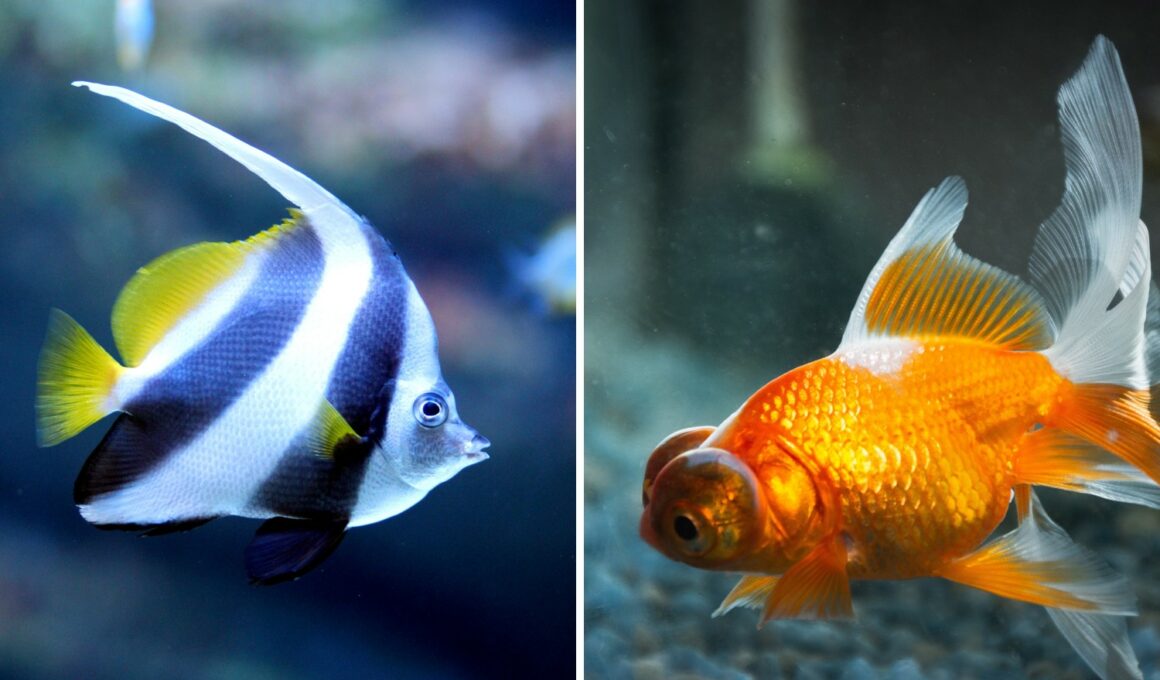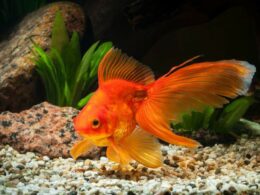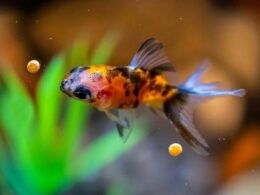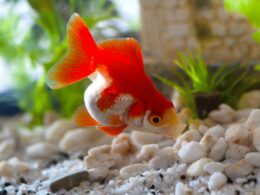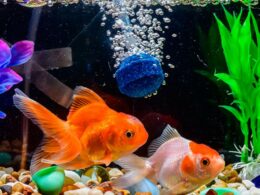In this article Show
As an experienced fishkeeper, I understand the intricacies of creating a harmonious aquatic environment. Aquariums are not just about adding water and fish into a tank; they’re miniature ecosystems that require balance and understanding.
Angelfish and goldfish are among the most beloved aquarium pets, each with unique characteristics and requirements. But can these distinct species live together peacefully? That’s the question we’re here to answer.
In this journey, we’ll look at various factors that influence the compatibility of these fish, from water conditions and dietary needs to their social behaviors and environmental preferences. Whether you’re a beginner in fishkeeping or an experienced hobbyist, this article aims to provide you with valuable insights and practical advice.
Can Angelfish Live With Goldfish?
Yes, angelfish and goldfish can live together, but it requires careful consideration of their different needs. While angelfish thrive in warmer, slightly acidic water, goldfish prefer cooler temperatures and neutral pH levels. Additionally, the territorial nature of angelfish and the peaceful demeanor of goldfish can pose challenges.
Behavioral Compatibility Of Angelfish And Goldfish
Understanding the social behavior of angelfish and goldfish is vital when considering their cohabitation in an aquarium. Angelfish are known for their semi-aggressive nature. They can be territorial, especially during breeding times, and may display dominance over smaller or less assertive fish. This behavior is a part of their natural instinct, derived from their habitat in the wild.
Goldfish, in contrast, exhibit a more peaceful and social demeanor. They are typically gentle and non-aggressive, often thriving in a community setting. However, their tranquil nature can make them vulnerable to more assertive tank mates like angelfish.
The potential challenge in housing angelfish with goldfish lies in this behavioral disparity. Angelfish might bully or harass the more passive goldfish, causing stress and potential harm. This risk is heightened in smaller tanks where space is limited, increasing the likelihood of territorial disputes.
To mitigate these challenges, it’s important to provide a spacious tank that allows ample room for both species to swim and establish their own territories. Decorations and plants can also offer hiding spots and break lines of sight, reducing tension. Monitoring the fish for signs of aggression or stress is crucial, and adjustments to the tank setup or fish grouping may be necessary to maintain a harmonious environment.
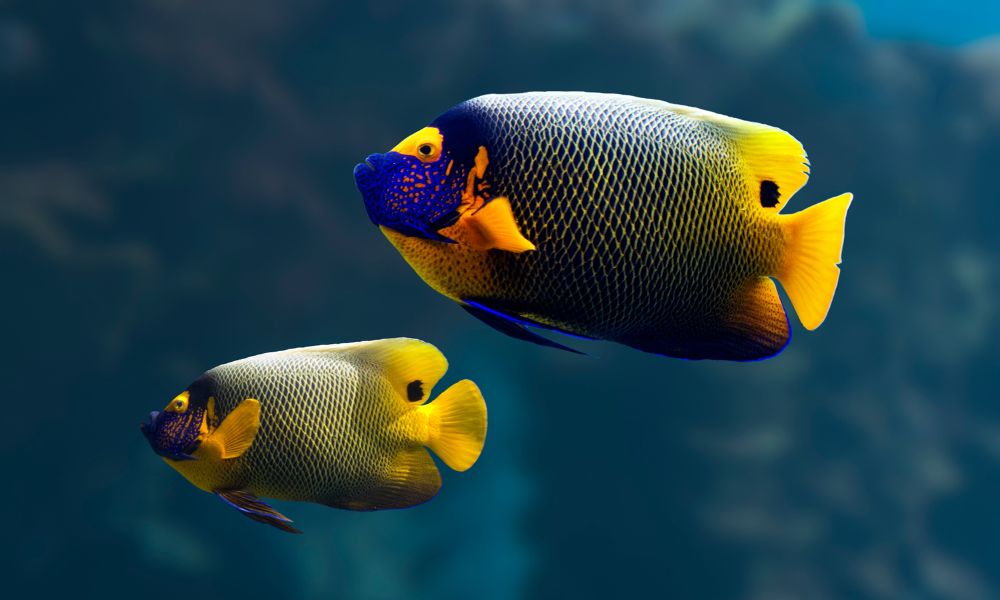
Dietary Needs and Feeding
Angelfish and goldfish have distinct dietary requirements, an important consideration for their cohabitation in an aquarium. Angelfish are omnivores, requiring a varied diet that includes both plant and animal matter.
They typically feed on flakes, pellets, live or frozen foods like brine shrimp and bloodworms, and vegetation. A protein-rich diet is essential for their health and vibrant coloration. Goldfish, on the other hand, are more herbivorous. They do well on a diet primarily consisting of plant-based foods.
Goldfish food often comes in the form of flakes or pellets, designed to provide a balanced diet with a focus on vegetables and less protein. They also enjoy occasional treats like peas and leafy greens.
When feeding angelfish and goldfish in the same tank, the primary challenge is ensuring that each species receives its specific nutritional needs without overfeeding. Angelfish may consume food more aggressively, potentially leaving goldfish with less to eat. Overfeeding can also lead to water quality issues, which can harm both species.
To manage these dietary differences, it’s advisable to feed them in separate areas of the tank and monitor their eating habits. Providing a mix of foods suitable for both species can help ensure that each fish gets the right nutrition. It’s also important to maintain a regular feeding schedule and avoid overfeeding to keep the tank environment healthy for both angelfish and goldfish.
Potential Health Concerns
When housing angelfish and goldfish together, being aware of their health concerns is essential. Angelfish is prone to issues like ich (white spot disease), fin rot, and fungal infections. These conditions are often stress-related, arising from poor water quality or incompatible tank mates.
Goldfish, known for their hardiness, can still face health problems like swim bladder disease, which affects their buoyancy, and fungal infections. They are also susceptible to parasites and bacterial infections, particularly in overcrowded or unclean tanks.
A significant concern in a mixed-species tank is the risk of cross-species disease transmission. Diseases can spread more rapidly in an aquarium setting, and treating these diseases can be more complex when different species with varying sensitivities to medications are involved.
To mitigate these risks, maintaining excellent water quality is crucial. Regular water changes, proper filtration, and monitoring for any signs of illness are essential practices. Quarantining new fish before introducing them to the tank can help prevent the introduction of diseases.
Additionally, understanding the specific signs of illness in each species allows for early detection and treatment, reducing the risk of widespread health issues in the aquarium.






